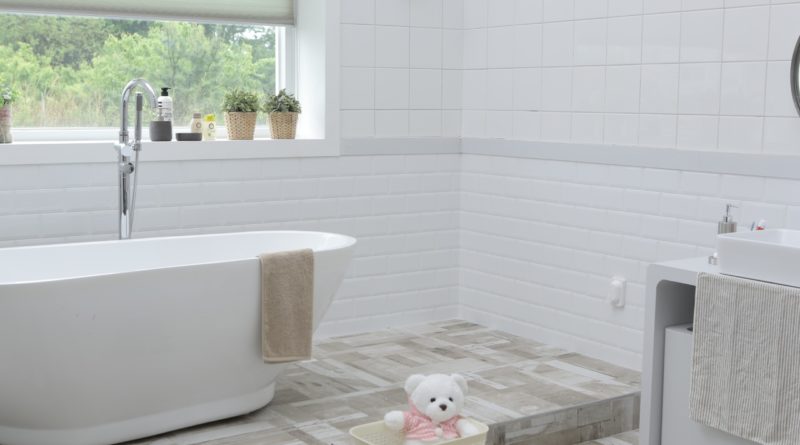7 Pro Tips For Selecting The Proper Grout Color
Picking tile from the thousands of options out there was the hard part — but now you have to think about grout! Whether you’re using a classic subway tile or a quirky mosaic pattern, the grout you choose can make a big visual impact. It doesn’t matter if it’s on the floor of your basement or the backsplash in your kitchen, the look of tile can change dramatically depending on the grout that surrounds it.
For example, consider the difference between white tiles with white grout and white tiles with black grout. One creates a uniform visual appearance, while the other accentuates the shape and size of each tile. So how do you choose between the various shades of grout that are available? Once you’ve landed on a tile choice, what criteria should you use to sort through grout options? Are there any design principles to keep in mind?
To help answer these questions and empower you to choose a grout color you’ll feel love as much as your tile, here are a few key tips. Whether you’re completing a kitchen renovation or laying fresh tiles for a new bathroom floor, they’ll make it easier for you to choose the grout that will work best for your application.
01. Match the grout to your tile when you want to create the illusion of more space.
Are you tiling a tiny bathroom or compact kitchen where space is at a premium? Is it a priority to visually enlarge the space? Would you like to extend the visual line of a floor or wall, so it looks longer or bigger? If so, you’ll appreciate the power of a grout color that matches your tile. Matching grout and tile, such as white with stark white tile or gray with a gray background, gives the illusion of a single, cohesive surface. It takes the focus off the tile and puts it more in the room. Go with this option when you want your tiled area to appear as a single installation instead of rows of separate tiles.
02. Contrast the grout with your tile when you want to call attention to its design.
In large spaces that you aren’t trying to elongate, or in areas of your home where you’re trying to make a strong visual statement, contrasting the tile and the grout can be the right choice. Pairing a dark gray or black grout with white tile or light grout with darker tile creates a bold look. It draws the eye to the shape and style of individual tiles instead of making the tiled area look seamlessly cohesive. This is a great choice when you particularly like your tiles and/or want to emphasize their design. It also works well in large kitchens or bathrooms where you have plenty of wall or floor space to play with and no space constraints.
03. Go with soft color for a compromise between the two above options.
When you don’t want your tile and grout to match, but also don’t want high contrast, you might choose to go with a softer pairing, such as light gray grout against white tiles. This creates a less dramatic, but still arresting look — one that widely appeals to guests or, when you’re ready to sell, potential buyers.
04. In the case of multicolored tiles, choose one of the colors for your grout.
Say you have a black, white and yellow tile. Choose grout in one of those shades for a foolproof design. Or, in cases where it’s difficult to match grout to the colors of your tile, look for a similar grout color that will coordinate well. This will help you create a design with long-term appeal.
05. Consider using a grout color that amplifies your decorating.
In a kitchen where black and white or yellow and blue are the primary colors, for example, you can carry that scheme into your tile by choosing a matching colored grout. This is also true in a bathroom or any other tiled space. In these cases, the grout essentially acts as an accessory in the design.
06. Test out the combination before committing.
To avoid making a grout decision you will regret later, try creating a mockup. Just as you might paint a small section of a wall or tape up a wallpaper sample before committing to the choice on a grand scale, you can test out tile-and-grout combinations before you greenlight your entire project. Get a few pieces of tile and combine them with a potential grout color on a piece of plywood. Place the sample on the bathroom floor or display it upright on the kitchen counter. Live with it for a few days, paying attention to how it looks at different times of the day and in different lighting — natural and electric — to get a sense of whether you like the combination well enough to install it in your room.
07. Don’t forget to factor upkeep into your decision.
In places with low traffic or limited use, such as small half baths, you may not worry as much about grout stains. In main bathrooms or kitchen spaces, however, it’s wise to consider how grout weathers over time. Light grout tends to show stains faster, but dark grout tends to fade due to regular cleaning. Whichever grout you choose, be sure to properly seal it in order to protect it as much as possible from stains and cleansers.
Just as shopping for tile can be overwhelming in a design universe with so many options, choosing the perfect grout color can be confusing and frustrating. The good news is, it doesn’t need to be if you keep these tips in mind when you begin sifting through the possibilities. Whether you’re grouting tile in the basement, bathroom, kitchen or another space, use these general principles to guide you to the best color for your space — and a look you’ll love for years to come.
Author bio: Erica Garland is Content Marketing Manager at Modern Bathroom and has 15 years of experience in the bathroom renovation industry. Modern Bathroom sells a variety of products you would need for any bathroom renovation project. With such a large selection of vanities, faucets, sinks, toilets, and showers, Modern Bathroom is sure to have the perfect piece to give your bathroom an updated look.

